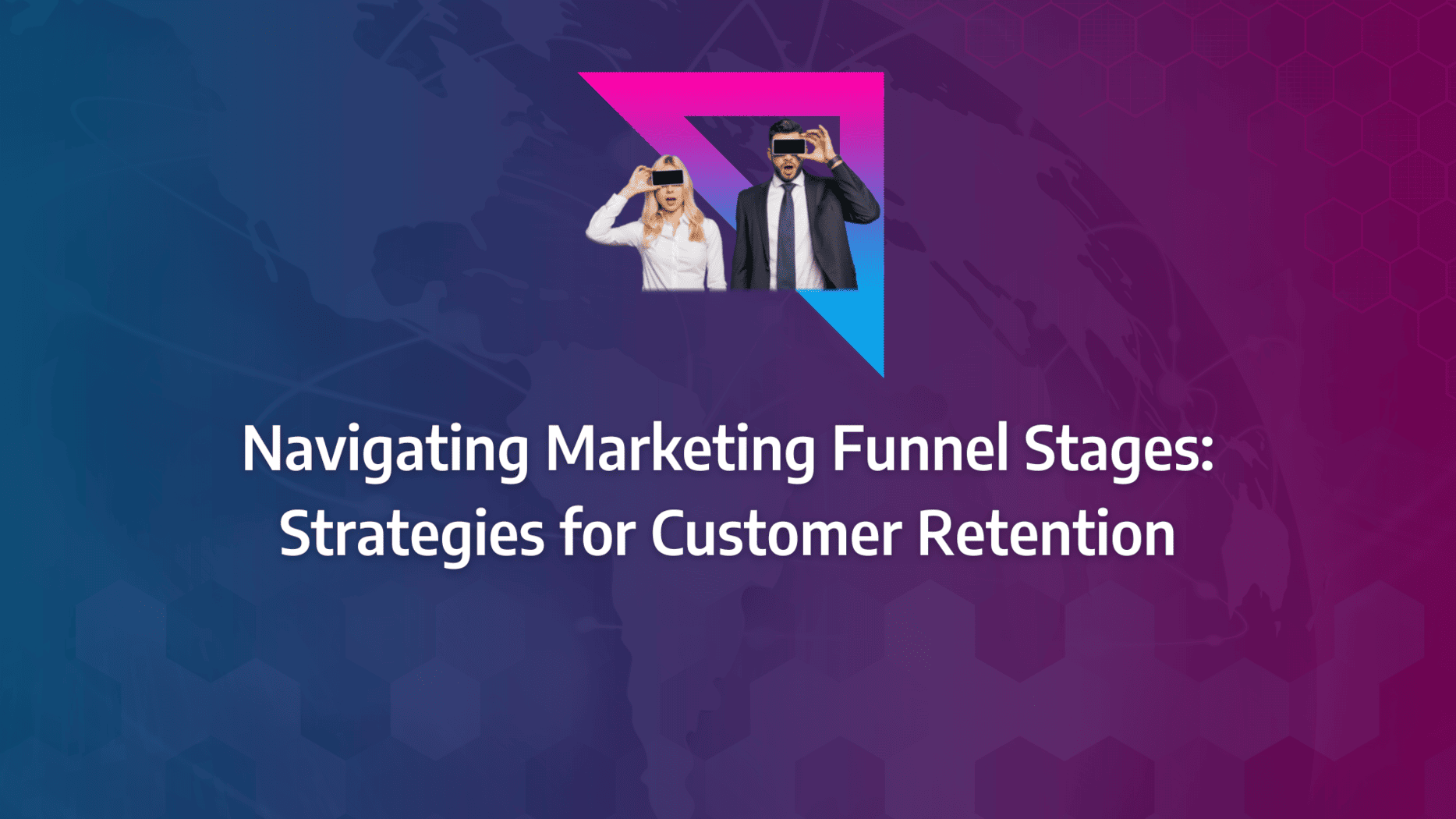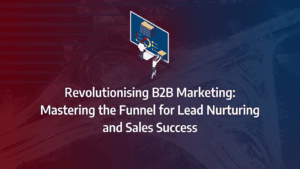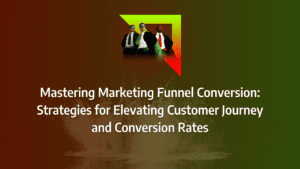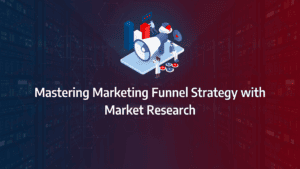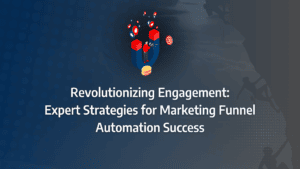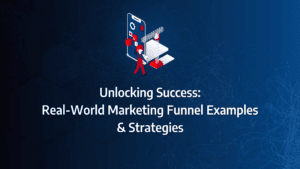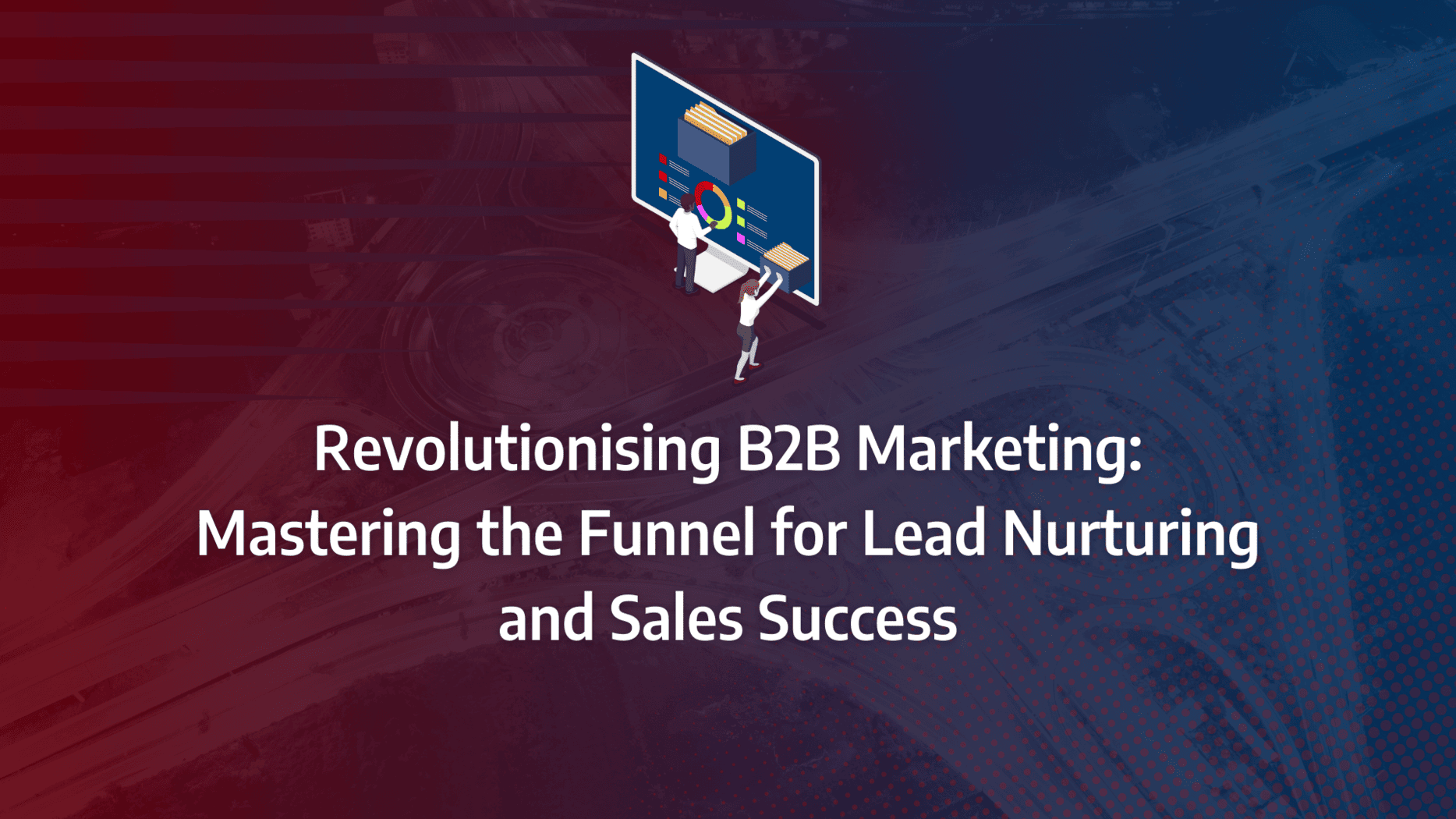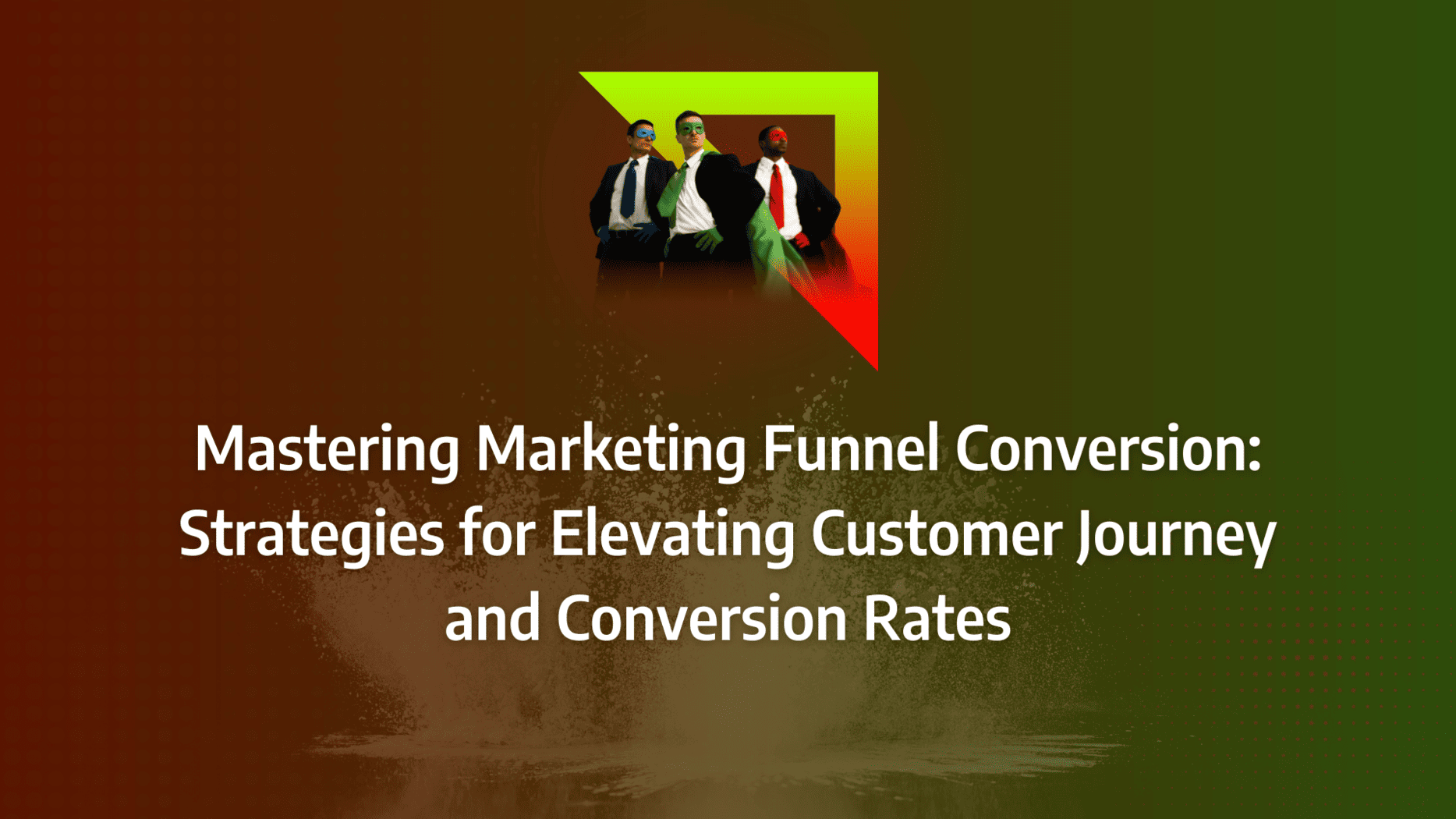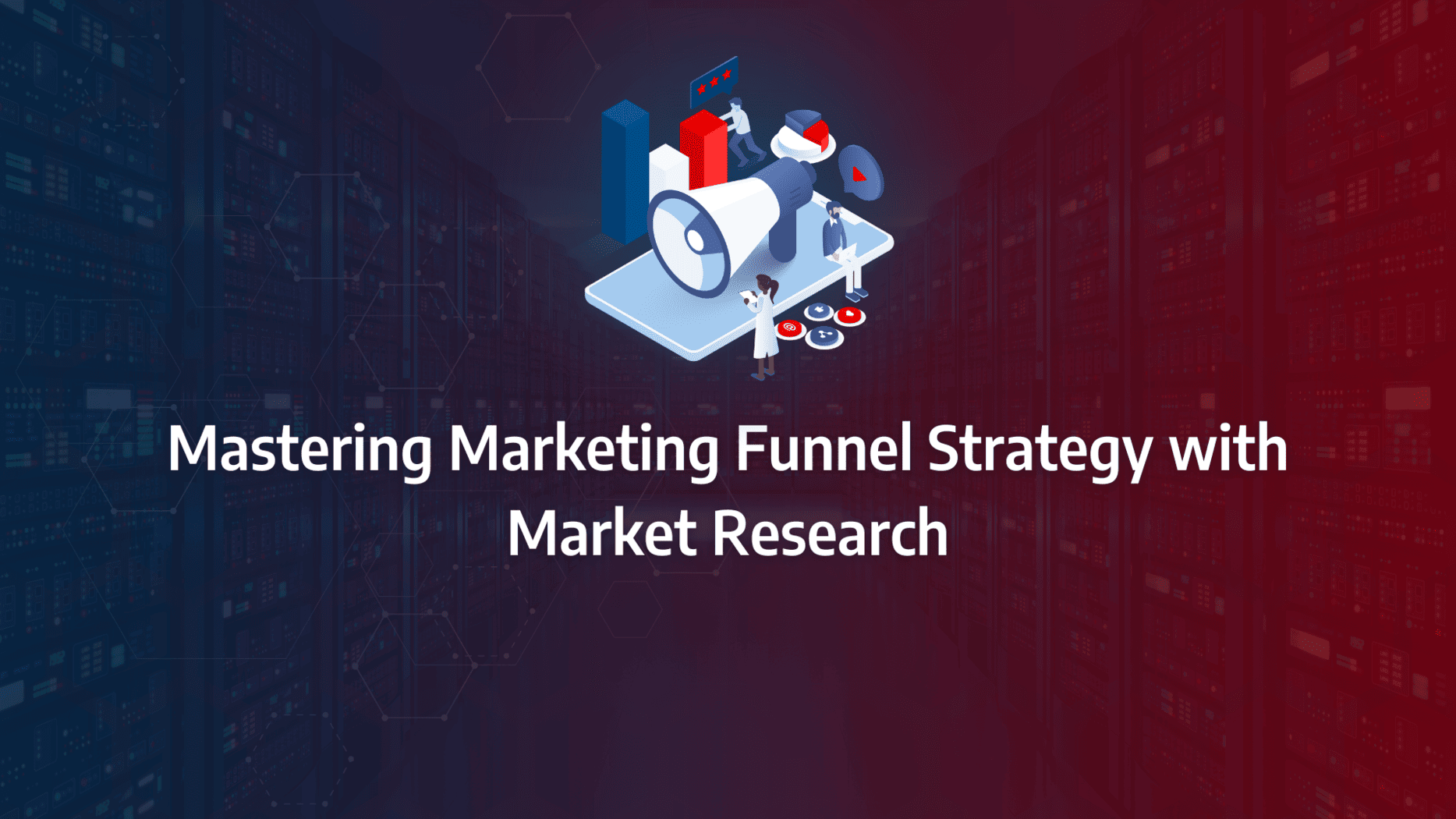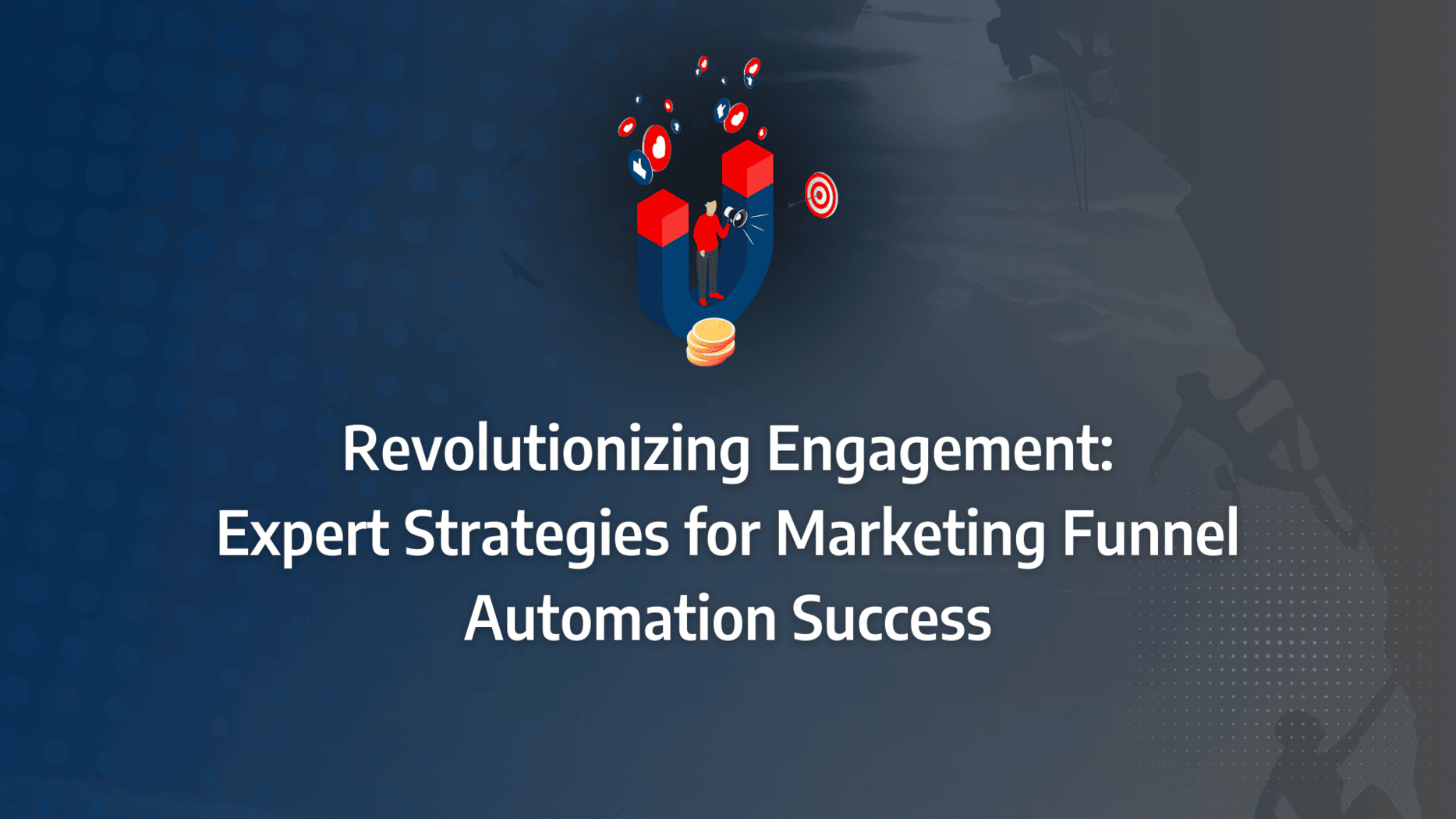Imagine investing significant resources to attract potential customers, only to see them slip through the cracks at various stages of your marketing funnel. It’s frustrating, isn’t it? Many businesses struggle with retaining customers because their marketing funnel isn’t optimised to nurture leads effectively through every stage.
You’re not alone in this challenge. The journey from awareness to retention is filled with obstacles that can hinder your success. But here’s the good news: by understanding and optimising each stage of your marketing funnel, you can significantly improve customer retention.
In this post, we’ll explore how you can enhance your funnel strategy to keep customers engaged and loyal. Whether you’re grappling with the complexities of the AIDA model or trying to fine-tune your funnel stages for better results, this guide will offer you actionable insights to overcome these challenges.
- Understand the Importance of Each Funnel Stage: Each stage of the marketing funnel plays a crucial role in guiding prospects from awareness to retention, ensuring no opportunities are lost.
- Apply the AIDA Model: Utilise the AIDA (Attention, Interest, Desire, Action) structure to effectively move customers through the funnel, enhancing their journey and boosting retention.
- Optimise for Customer Retention: Focus on strategies that nurture and engage customers at every funnel stage, particularly during the decision and retention phases.
- Overcome Funnel Management Challenges: Address common challenges in managing funnel stages with practical solutions to maintain an effective and seamless customer journey.
- Leverage Tools and Tactics: Employ CRM systems and marketing automation platforms to streamline and optimise each stage of your marketing funnel.
- Track Key Metrics and KPIs: Regularly monitor metrics and KPIs at each funnel stage to measure the success of your strategies and make necessary adjustments.
What is the AIDA Model?
The AIDA model is a comprehensive blueprint utilised in marketing, sales functions, and advertising, encompassing all touchpoints throughout a customer’s purchase journey. This model effectively maps out the pathway from initial awareness to retention.
What Matters Most?
From our experience, transitioning from linear funnels to dynamic, non-linear models often reshapes how organisations connect with their prospects. Clients typically discover that these adaptable journeys lead to more personalised interactions, enhancing overall engagement. We’ve also seen that integrating sales and marketing teams to develop funnel stages ensures that efforts are aligned, creating a seamless experience for the customer throughout their journey. Additionally, leveraging martech to automate and personalise these interactions not only increases efficiency but also allows organisations to scale their strategies effectively, adapting as they grow.Get In Touch
What Does AIDA Stand For?
- Awareness: Creating brand awareness with the product or service.
- Interest: Generating interest in the benefits of your product or service.
- Desire: Moving the consumer from simply liking the product to genuinely wanting it.
- Action: Encouraging the buyer to interact with your company and take the next step.
- Retention: Essential for upselling, cross-selling, referrals, and advocacy.
Marketing experts sometimes add an additional “R” to emphasise the importance of fostering an ongoing relationship with customers.
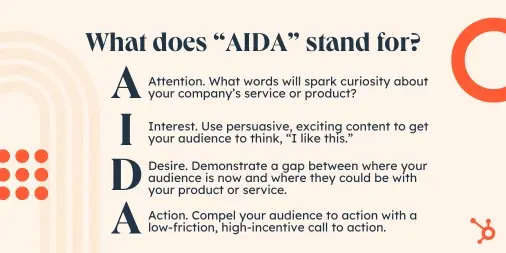
New Models of AIDA
The AIDA marketing funnel model has evolved significantly over the last three centuries, leading to several variants of the traditional AIDA structure. While the core principles of Attention, Interest, Desire, and Action remain, these new models incorporate additional elements to address the complexities of modern marketing strategies.
Examples of Evolved AIDA Models:
- AIDAS – Attention, Interest, Desire, Action, Satisfaction
- AIDCA – Attention, Interest, Desire, Conviction, Action
- AIDEA – Attention, Interest, Desire, Evidence, Action
- REAN – Reach, Engage, Activate, Nurture
These models still focus on the foundational AIDA structure but emphasise customer retention and trust-building to foster long-term brand loyalty.
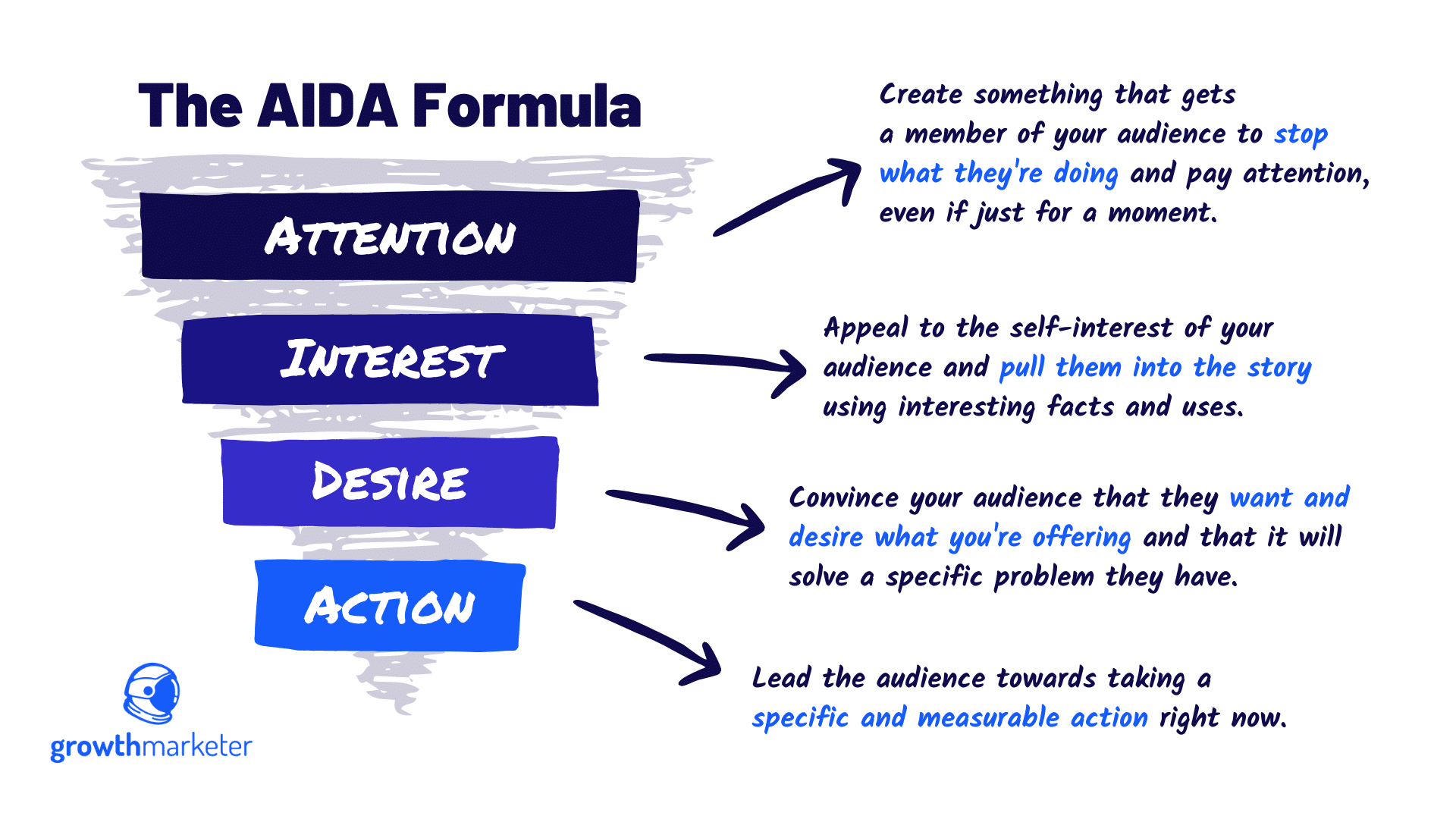
The Stages of the AIDA Model
1. Awareness
The first stage of the AIDA model involves making potential consumers aware of your brand’s products or services. This can occur through various channels, such as word-of-mouth, advertisements, or events that showcase your offerings. In today’s digital age, sponsored content has become a prevalent method for capturing consumer attention.
Ways to Gain Attention:
- Captivating Advertisements: Eye-catching ads that resonate with your target audience.
- Personalised Messaging: Tailored messages that address individual needs and preferences.
- Intelligent Targeting: Using data-driven insights to target the right audience effectively.
2. Interest
Generating interest is arguably the most critical of the marketing funnel stages. If a lead perceives that a product or service does not fulfil their needs, they will never advance to the purchase stage. Therefore, it is crucial to communicate your product message in a fresh and tailored manner that aligns with the audience’s profile.
Key Strategies:
- Highlighting Consumer Needs: Focus on how the product addresses specific pain points.
- Engaging Content: Use compelling content to pique interest and encourage further exploration.
3. Desire
Creating interest alone is insufficient. While a consumer may like a brand, this does not guarantee sales. Interest and desire should be cultivated simultaneously. Immediately after sparking interest, it is vital to demonstrate why the consumer should desire the product.
Building Desire:
- Demonstrate Value: Clearly show the benefits and advantages of your product.
- Create a Sense of Urgency: Use limited-time offers or exclusive deals to make the product more appealing.
4. Action
At this stage, it is about converting interest and desire into tangible actions. Various marketing funnel tactics can be employed, such as early-bird discounts, free trials, and referral programmes, to provide that final push towards purchase.
Encouraging Action:
- Clear Call-to-Actions (CTAs): Use strong, directive language to guide the consumer towards the next step.
- Incentives: Offer incentives like discounts or bonuses to motivate purchase decisions.
Applying the AIDA Model
Understanding the AIDA structure is one thing, but applying it effectively is another. By integrating these strategies into your marketing funnel model, you can enhance your funnel strategy and ensure a seamless transition through each stage, from awareness to retention.
Marketing Funnel Stages in Action
Having understood the fundamentals of the AIDA model, let us explore its practical application through a detailed example of a hairdressing company’s marketing funnel model. This real-world scenario will illustrate how the AIDA structure can effectively launch a new salon.
- Awareness: To create awareness, the hairdressing company initiated a comprehensive PR campaign four months before the salon’s opening. They highlighted their awards, showcased their talented stylists, and emphasised their qualifications. This campaign was further strengthened with a drip-email strategy targeting existing customers, ensuring a broad reach and sustained interest.
- Interest: To generate interest, the company launched a direct mail campaign offering free consultations or haircuts. This personalised approach was backed by thorough research, ensuring that the investment would yield positive results. By directly engaging potential customers with a tangible offer, the salon successfully piqued interest.
- Desire: As the opening date approached, the company focused on generating desire. They hosted exclusive local events, promoted through local press and social media channels. These events created a buzz and made consumers eager to receive invitations, effectively translating interest into a strong desire to experience the new salon.
- Action: To drive action, the salon utilised clear calls to action (CTAs) prominently displayed on their website, Facebook page, and local advertisements. These CTAs directed potential customers to book appointments or attend the opening events, thereby converting desire into tangible actions.
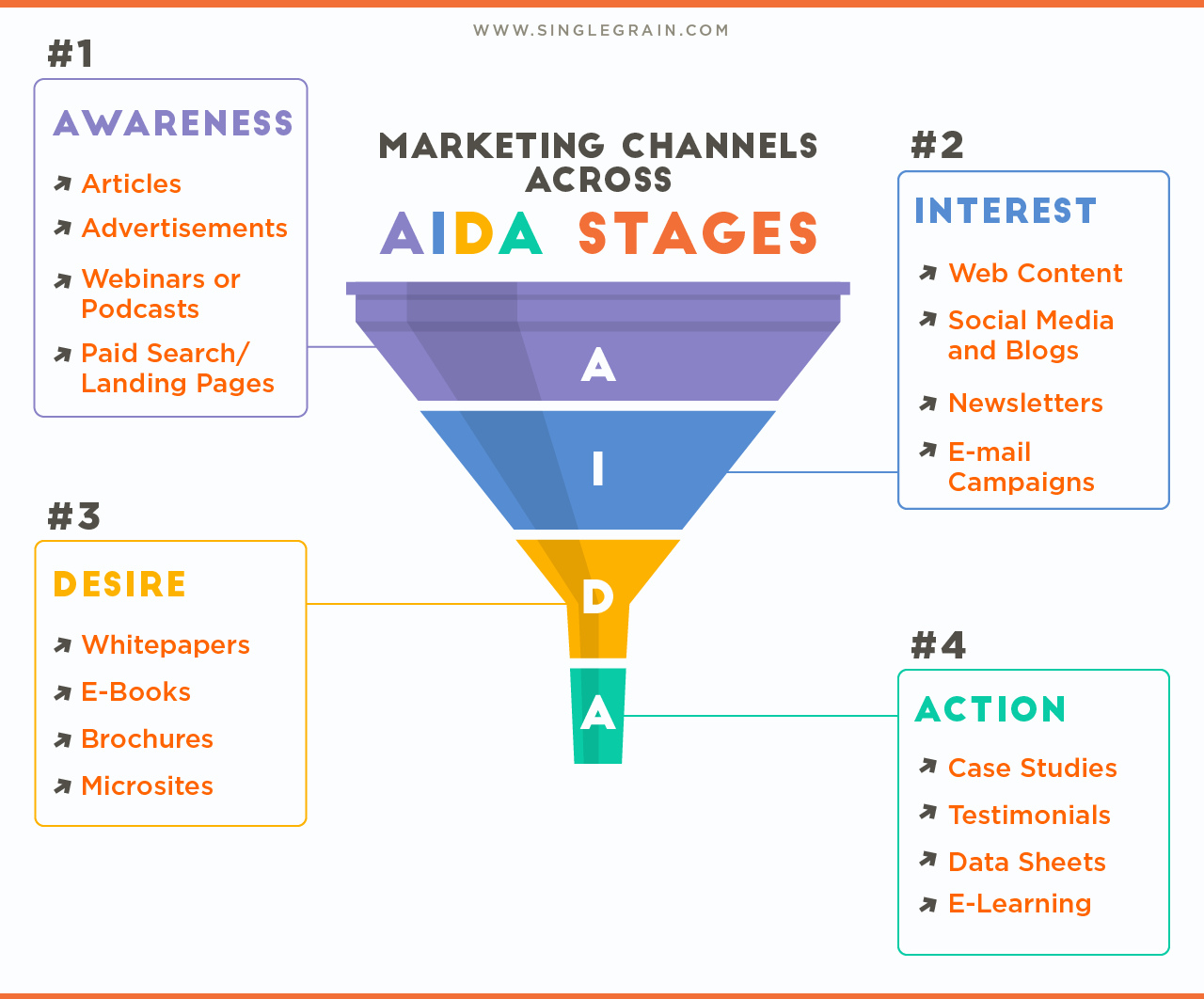
Ways to Generate Interest and Desire
As highlighted, interest and desire are pivotal marketing funnel stages. If leads do not perceive value in your product, they will likely exit the funnel. This stage is crucial for emphasising the features and benefits that will motivate customers to make a purchase.
Apple’s iPod Success
A quintessential example of effective interest and desire generation is Apple’s launch of the iPod in 2003. The iPod’s features were significantly superior to those of CD players and MP3 players available at the time. Apple’s simple yet powerful message, “iPod, a thousand songs in your pocket,” captured the imagination of potential customers without focusing on price or additional features. This strategy piqued consumer interest and stirred their desire for the innovative product.
Dollar Shave Club’s Viral Video
Dollar Shave Club (DSC) utilised humour and authenticity to generate interest and desire with their viral video. Featuring the company’s founder, Michael Dubin, the video’s quirky and straightforward style resonated with consumers, portraying the brand as both expert and approachable. This unique approach made the video an instant hit, significantly boosting interest and desire for DSC’s products.
Encouraging Desire
Once a potential customer shows interest in your business, it is essential to shift that interest to desire. At this point, leads are eager for more information and are keen to learn how your product can meet their needs.
Understanding the diverse personality traits that influence purchasing behaviour is crucial. For instance, when buying a car, some customers may prioritise safety and fuel efficiency, while others might focus on colour and speed. Tailoring your communication to highlight the specific features and benefits that align with these diverse preferences will encourage desire.
Tailored Offers
Knowing your customer’s wants and needs allows you to craft offers that appeal directly to them. For example, providing detailed information on safety features for those concerned with safety, or showcasing sleek designs for those focused on aesthetics, can significantly enhance desire.
By seamlessly integrating these strategies into your marketing funnel stages, you can effectively guide potential customers through the stages of the AIDA model, ensuring a successful transition from awareness to action.
What strategies can I use to encourage action from potential customers?
At the final marketing funnel stages, you can apply psychological triggers to help your leads make the final decisions. The key to success in any business is an understanding of psychology. Everyone has the same mental triggers that drive actions, and brands that comprehend these triggers can easily influence their customers to make a final decision.
New or Original
Humans are naturally drawn to novelty as it makes the brain feel excited and rewarded. The potential pleasure a novel item or service brings will motivate any consumer to want to buy. This is why Apple releases a new version of the iPhone every few months. Consumers know there is little difference between the old and new models, yet most are still willing to upgrade. If you want your leads to buy your products or services, ensure you offer them something new or original. For brands with an existing product, a few tweaks, updates, or rebranding can do the trick.
Tell a Story
Stories trigger emotional responses, which is why humans love to listen to them. Stories activate various parts of the brain associated with sound, sight, movement, and taste, allowing humans to experience something without directly experiencing it. When a compelling story is told, it can transport consumers to a completely different world and encourage the decision to buy. A perfect example is how Red Bull captivates its audience with stories of extreme adventures. While the brand sells energy drinks, they use stories of adventure and fun to drive customers to want to try their product.
Provide Simple Solutions
People will always choose the easy way out. According to Daniel Kahneman, a Nobel Prize winner and author of Thinking, Fast and Slow: “A general ‘law of least effort’ applies to cognitive as well as physical exertion. The law asserts that if there are several ways of achieving the same goal, people will eventually gravitate to the least demanding course of action.”
This means humans will always look for the easiest option to get the desired result. Make sure to use this psychological trigger when creating a marketing framework. When you show your audience a fool-proof way to achieve a result quickly, they will likely pay for that solution.
Make Customers Feel Significant
Every human loves to feel important and significant, not just in their own eyes but within the circle they belong to. You can make your customers feel extra special by letting them know you care about them. Good customer service is always expected, so make sure to go the extra mile. Providing excellent customer service will make your leads feel valued.
Our Tactical Recommendations
In our work, using conversational marketing can significantly accelerate prospects through funnel stages by offering immediate, contextually relevant responses. Clients often find that this approach meets the prospect’s needs at the moment, moving them forward more quickly. Additionally, focusing on reducing cognitive load at each stage typically makes the buyer’s journey smoother, enabling easier transitions from one stage to the next.Get In Touch
How to Apply AIDA to Various Marketing Strategies
Outbound Strategy
When users are at the top of the AIDA marketing model, the goal is to create brand awareness campaigns that help users discover more about your business and offerings. Effective marketing funnel tactics at this stage include:
- Display Advertising: Visually appealing ads to capture attention.
- Paid Social: Targeted social media ads to reach potential customers.
- Targeted Videos: Engaging video content to build interest.
- Remarketing: Ads that follow users who have previously visited your site.
At this initial stage, the ads should not be overly brand-heavy but should aim to increase reach and visibility.
Inbound Strategy
For users in the middle of the funnel, around the informational or desire stage, the focus shifts to engaging your target audience and driving traffic to your site. Key marketing funnel tactics here include:
- Retargeting Ads: Ads for products or services previously viewed by users.
- Content Marketing: High-quality content that addresses user pain points and interests.
- Email Campaigns: Personalised emails to nurture interest and desire.
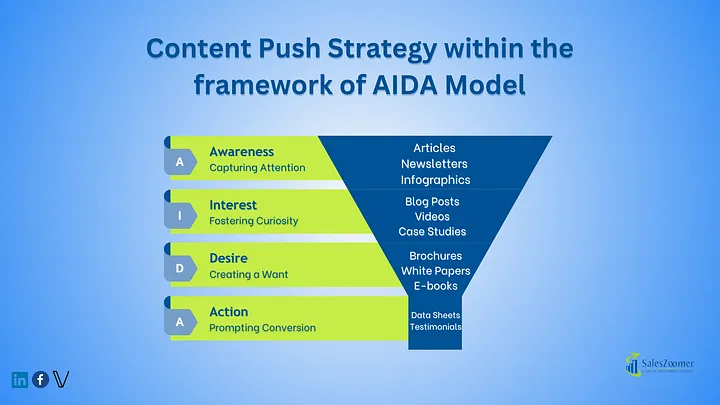
Conversion Strategy
When targeting users at the bottom of the funnel, ready to convert, it’s crucial to highlight your Unique Selling Propositions (USPs) and drive conversions through targeted adverts. Effective tactics include:
- Google Search Ads: Targeted ads based on user search intent.
- Google Shopping: Ads showcasing specific products with purchase options.
- Remarketing Lists for Search Ads (RLSAs): Tailored search ads for users who have previously visited your site.
Direct users to the most relevant page, such as a contact form for lead generation or a product page for e-commerce, ensuring a smooth path to conversion. At this crucial stage, capturing the user’s action is vital, so consider offering promotions or hyper-targeted adverts to influence their decision.
AIDA and Social Media
Social media platforms offer vast audiences and data for refined targeting. Implementing the AIDA structure on social media can enhance your funnel strategy:
- Awareness: Develop awareness through prospecting users with emotive language and engaging videos.
- Interest: Build interest with compelling content that addresses user needs and pain points.
- Desire: Create desire by showcasing the unique benefits and features of your product or service.
- Action: Encourage action by asking for sign-ups, contacts, or donations, and use remarketing to reinforce brand loyalty.
Ultimately, integrating the AIDA structure into your social media strategy can help build a well-rounded and highly effective conversion funnel, leveraging the power of targeted marketing funnel tactics across each stage.
The continuous adaptation of the AIDA marketing funnel model underscores the importance of evolving marketing strategies to meet contemporary challenges. By understanding and applying these various AIDA structures and marketing funnel tactics, businesses can enhance their funnel strategy, drive better engagement, and achieve higher conversion rates. Remember, effective use of the AIDA structure, whether through outbound, inbound, or social media strategies, can significantly improve your marketing outcomes.
